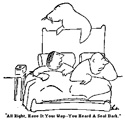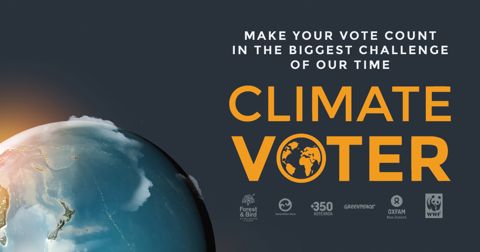[vimeo 55642398 w=480]
This guest post is by professor Peter Barrett, executive producer, and Suze Keith, marketing advisor for Thin Ice.
Scientists can tell human stories about climate change, and a group of us have been working on just that for the last few years. We’ve produced a film — Thin Ice – the inside story of climate change — which follows a scientist, geologist and camera buff Simon Lamb, who is concerned at the flak his climate science colleagues have been taking.
Simon travels from the Antarctic to the Arctic. He listens to scientists talk about their work, hopes and fears, and discovers how the astonishing range of research really does fit together. By the end there are just two messages – that our ultimate goal should be zero carbon emissions (in line with the latest IPCC report), and that science really does work. As paleoclimatologist Dave Harwood says to young people at the end of the film:
Don’t be scared by this thing. Come and join in our effort. Be the best scientists and engineers you can, and we’ll deal with it.
Continue reading “Thin Ice: what polar science is telling us about climate”

 I promised an open thread, so here’s one to hold all your latest thoughts and wisdom. What’s it to be? Wind power, silly “solar models” built on notch filters and fudge factors, or the abysmal climate politics afflicting our friends across the Tasman? You decide. I only ask that you abide by the
I promised an open thread, so here’s one to hold all your latest thoughts and wisdom. What’s it to be? Wind power, silly “solar models” built on notch filters and fudge factors, or the abysmal climate politics afflicting our friends across the Tasman? You decide. I only ask that you abide by the 
 Wine grapes are a climatically sensitive crop grown across a fairly narrow geographic range. Growing season temperatures for high-quality wine production is generally limited to 13–21°C on the average. This currently encompasses the Old World appellation regions of France, Italy, Germany, Spain and the Balkans, and those developing New World regions in California, Chile, Argentina, southern Australia and New Zealand.
Wine grapes are a climatically sensitive crop grown across a fairly narrow geographic range. Growing season temperatures for high-quality wine production is generally limited to 13–21°C on the average. This currently encompasses the Old World appellation regions of France, Italy, Germany, Spain and the Balkans, and those developing New World regions in California, Chile, Argentina, southern Australia and New Zealand.